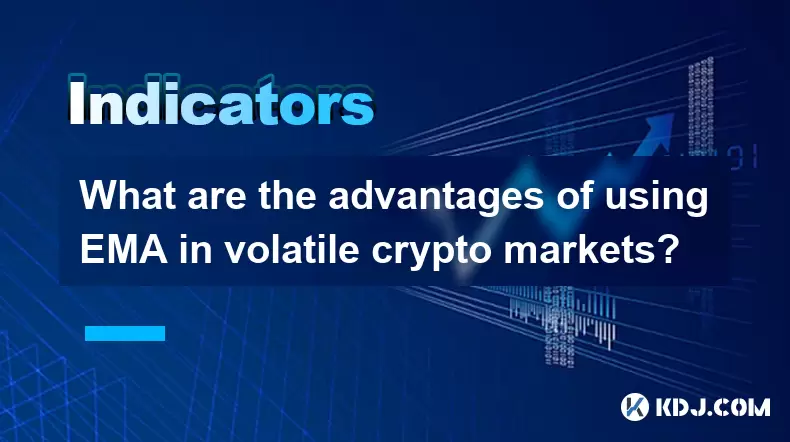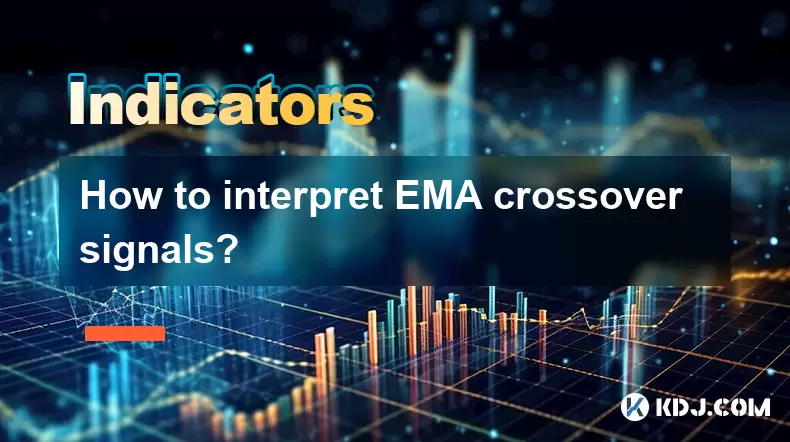-
 Bitcoin
Bitcoin $118300
-0.58% -
 Ethereum
Ethereum $3825
0.11% -
 XRP
XRP $3.137
-0.71% -
 Tether USDt
Tether USDt $0.9999
-0.01% -
 BNB
BNB $803.9
-3.37% -
 Solana
Solana $181.5
-1.94% -
 USDC
USDC $0.9999
0.01% -
 Dogecoin
Dogecoin $0.2238
-2.51% -
 TRON
TRON $0.3358
2.12% -
 Cardano
Cardano $0.7844
-2.16% -
 Hyperliquid
Hyperliquid $43.31
-1.48% -
 Sui
Sui $3.807
-4.04% -
 Stellar
Stellar $0.4203
-1.96% -
 Chainlink
Chainlink $17.79
-3.00% -
 Bitcoin Cash
Bitcoin Cash $567.8
-1.34% -
 Hedera
Hedera $0.2614
-4.30% -
 Avalanche
Avalanche $24.19
-4.46% -
 Litecoin
Litecoin $109.2
-0.74% -
 UNUS SED LEO
UNUS SED LEO $8.969
-0.01% -
 Toncoin
Toncoin $3.404
3.97% -
 Ethena USDe
Ethena USDe $1.001
-0.01% -
 Shiba Inu
Shiba Inu $0.00001307
-3.19% -
 Uniswap
Uniswap $10.33
-1.23% -
 Polkadot
Polkadot $3.884
-4.06% -
 Monero
Monero $312.9
-1.87% -
 Dai
Dai $1.000
0.01% -
 Bitget Token
Bitget Token $4.537
-2.24% -
 Pepe
Pepe $0.00001156
-3.40% -
 Cronos
Cronos $0.1437
-0.89% -
 Aave
Aave $282.8
-2.77%
What does it mean when the moving average suddenly diverges upward after it sticks together?
When moving averages converge and then diverge upward with rising volume, it signals strong bullish momentum, often marking the start of a new uptrend in crypto markets.
Jul 29, 2025 at 12:15 pm

Understanding Moving Averages in Cryptocurrency Trading
Moving averages are among the most widely used technical indicators in the cryptocurrency market. They help traders smooth out price data over a specified time period to identify trends more clearly. The two most common types are the Simple Moving Average (SMA) and the Exponential Moving Average (EMA). When multiple moving averages—such as the 50-day and 200-day—are plotted on a chart, they often converge or "stick together" during periods of low volatility or sideways price movement. This clustering indicates market indecision or consolidation. However, when these lines suddenly diverge upward, it signals a shift in market dynamics.
What Does It Mean When Moving Averages Stick Together?
When moving averages stick together, it typically reflects a consolidation phase in the price action. During this period, the short-term, medium-term, and long-term averages are nearly overlapping, suggesting that price changes have been minimal and lack a clear direction. This can happen after a prolonged downtrend or uptrend when the market pauses to "catch its breath." In cryptocurrency markets, which are highly volatile, such consolidation can last from a few hours to several weeks depending on the timeframe analyzed. Traders often interpret this as a period of accumulation, where large investors may be building positions before the next major move.
Interpreting an Upward Divergence of Moving Averages
An upward divergence occurs when the shorter-term moving average (e.g., 50-day EMA) begins to rise faster than the longer-term average (e.g., 200-day SMA), causing the lines to separate. This is a strong indication of increasing bullish momentum. The speed and angle of the divergence can provide additional insight. A sharp, steep divergence suggests aggressive buying pressure, often triggered by positive news, increased trading volume, or a breakout from a key resistance level. In the context of cryptocurrencies like Bitcoin or Ethereum, such divergence may follow events like regulatory clarity, institutional adoption announcements, or halving cycles.
How to Confirm the Validity of the Divergence Signal
To avoid false signals, traders should confirm the divergence using additional technical tools. The following steps can be taken to validate the signal:
- Check the volume trend during the divergence. A genuine upward breakout should be accompanied by a noticeable increase in trading volume. Low volume during divergence may indicate a weak move.
- Look for a break above key resistance levels on the price chart. This confirms that buyers are overcoming supply zones.
- Use oscillators like the Relative Strength Index (RSI) to assess whether the asset is overbought. An RSI above 70 may suggest a pullback is imminent, even if moving averages are diverging.
- Monitor on-chain metrics such as exchange outflows or active addresses, which can support the narrative of increasing demand.
These tools help differentiate between a sustainable trend and a temporary spike.
Practical Steps to Trade the Divergence Signal
When you observe moving averages diverging upward after a consolidation phase, consider the following actionable steps:
- Identify the timeframe on which the divergence appears. A divergence on the daily chart carries more weight than one on the 15-minute chart.
- Wait for the shorter MA to cross above the longer MA, which is known as a "golden cross" when using the 50-day and 200-day SMAs. This is a widely recognized bullish signal.
- Enter a long position after confirmation, such as a close above the consolidation range or a spike in volume.
- Set a stop-loss below the recent swing low or below the moving average cluster to manage risk.
- Use trailing stop orders to lock in profits as the trend progresses.
For example, if Bitcoin’s 50-day EMA was stuck near the 200-day SMA for weeks and then sharply moves upward with high volume, initiating a position after the first weekly close above $45,000 (assuming that’s the breakout level) with a stop-loss at $42,000 could be a strategic move.
Common Misinterpretations and Risks
Not every upward divergence leads to a sustained rally. In highly volatile crypto markets, whipsaws are common. A whipsaw occurs when moving averages diverge upward, suggesting a bullish trend, but the price quickly reverses. This can happen during "fake breakouts" where large traders manipulate price to trigger stop-losses. Another risk is lagging nature of moving averages—they are based on past prices and may not reflect sudden macroeconomic changes. For instance, unexpected regulatory crackdowns can reverse a bullish trend despite favorable technical signals. Therefore, relying solely on moving average divergence without considering broader market context can lead to losses.
Frequently Asked Questions
What timeframes are best for observing moving average divergence in crypto?
The daily and weekly charts are most reliable for identifying meaningful divergence. Shorter timeframes like 1-hour or 4-hour charts can show frequent but less significant divergences due to market noise.
Can moving average divergence occur in a downtrend?
Yes, but in a downtrend, divergence typically refers to the shorter MA falling faster than the longer one, creating downward separation. This is bearish and opposite to the upward divergence discussed.
Does the same divergence signal work across all cryptocurrencies?
While the principle applies universally, major coins like Bitcoin and Ethereum tend to produce more reliable signals due to higher liquidity. Low-cap altcoins may show erratic divergence due to manipulation or low trading volume.
How do I set up moving averages on popular trading platforms like TradingView?
On TradingView, click "Indicators" at the top of the chart, search for "Moving Average," select either SMA or EMA, and set the period (e.g., 50 and 200). Repeat to add a second MA. Adjust colors for clarity and observe their interaction over time.
Disclaimer:info@kdj.com
The information provided is not trading advice. kdj.com does not assume any responsibility for any investments made based on the information provided in this article. Cryptocurrencies are highly volatile and it is highly recommended that you invest with caution after thorough research!
If you believe that the content used on this website infringes your copyright, please contact us immediately (info@kdj.com) and we will delete it promptly.
- IPO, Bitcoin, and Treasury: A New Era of Crypto Investment?
- 2025-07-30 14:30:12
- Bitcoin, Binance, and Whales: Decoding the Latest Market Moves
- 2025-07-30 14:50:12
- Sinkhole Rescue: Migrant Workers' Heroism Sparks Fundraising in Tanjong Katong
- 2025-07-30 14:50:12
- Strategy, Bitcoin, and IPOs: A New York Perspective on 2025's Biggest Moves
- 2025-07-30 14:55:11
- TROLL Memecoin Mania: From Online Buzz to Market Reality
- 2025-07-30 14:55:11
- Coinbase, Circle, and the Power of Partnership: A New Era for Crypto?
- 2025-07-30 12:30:12
Related knowledge

What are the main differences between WMA, SMA, and EMA in crypto?
Jul 30,2025 at 02:50pm
Understanding the Role of Private Keys in Cryptocurrency WalletsEvery cryptocurrency wallet operates based on cryptographic principles, with the priva...

How is the WMA indicator calculated in cryptocurrency trading?
Jul 30,2025 at 02:35pm
Understanding the Weighted Moving Average (WMA) in Cryptocurrency TradingThe Weighted Moving Average (WMA) is a technical analysis tool widely used in...

How does news and market sentiment affect EMA signals in crypto?
Jul 30,2025 at 03:00pm
Understanding EMA and Its Role in Crypto TradingThe Exponential Moving Average (EMA) is a widely used technical indicator in cryptocurrency trading th...

What are the advantages of using EMA in volatile crypto markets?
Jul 30,2025 at 12:29pm
Understanding EMA in the Context of Cryptocurrency TradingThe Exponential Moving Average (EMA) is a widely used technical indicator in cryptocurrency ...

What is a good EMA for medium-term crypto trades?
Jul 30,2025 at 02:29pm
Understanding EMA in Cryptocurrency TradingThe Exponential Moving Average (EMA) is a widely used technical indicator in cryptocurrency trading that gi...

How to interpret EMA crossover signals?
Jul 30,2025 at 01:56pm
Understanding EMA and Its Role in Technical AnalysisThe Exponential Moving Average (EMA) is a widely used technical indicator in the cryptocurrency tr...

What are the main differences between WMA, SMA, and EMA in crypto?
Jul 30,2025 at 02:50pm
Understanding the Role of Private Keys in Cryptocurrency WalletsEvery cryptocurrency wallet operates based on cryptographic principles, with the priva...

How is the WMA indicator calculated in cryptocurrency trading?
Jul 30,2025 at 02:35pm
Understanding the Weighted Moving Average (WMA) in Cryptocurrency TradingThe Weighted Moving Average (WMA) is a technical analysis tool widely used in...

How does news and market sentiment affect EMA signals in crypto?
Jul 30,2025 at 03:00pm
Understanding EMA and Its Role in Crypto TradingThe Exponential Moving Average (EMA) is a widely used technical indicator in cryptocurrency trading th...

What are the advantages of using EMA in volatile crypto markets?
Jul 30,2025 at 12:29pm
Understanding EMA in the Context of Cryptocurrency TradingThe Exponential Moving Average (EMA) is a widely used technical indicator in cryptocurrency ...

What is a good EMA for medium-term crypto trades?
Jul 30,2025 at 02:29pm
Understanding EMA in Cryptocurrency TradingThe Exponential Moving Average (EMA) is a widely used technical indicator in cryptocurrency trading that gi...

How to interpret EMA crossover signals?
Jul 30,2025 at 01:56pm
Understanding EMA and Its Role in Technical AnalysisThe Exponential Moving Average (EMA) is a widely used technical indicator in the cryptocurrency tr...
See all articles

























































































